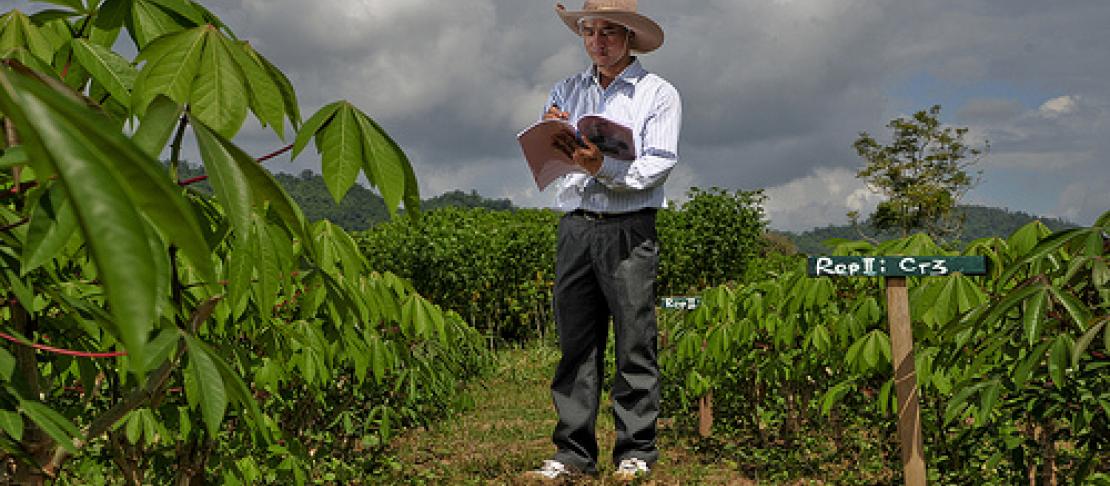Plant breeders respond to climate-related stresses in multiple ways

by Ronnie Vernooy
Bioversity International recently undertook an in-depth study of Availability of plant genetic resources in times of climate and policy change for the CGIAR Research Program on Climate Change, Agriculture and Food Security (CCAFS). This blog post is a summary of the publication.
Plant breeders within the CGIAR emphasize that they have been responding to climate-related stresses for a long time, and several are sceptical about donors and research and development organizations suddenly putting so much emphasis on climate change. Nonetheless, most can point to new breeding activities and the use of new technologies directly linked to factors such as increased drought, more extreme temperatures, more widespread flooding, higher levels of salinity and shifting patterns of pest and disease occurrence, all of which are associated with climate change.
The rationale driving these CGIAR breeding practices has not changed – the aim remains to develop targeted elite materials. The CGIAR Centres’ original strategy for genetic crop improvement was to make the crosses at their headquarters or regional breeding stations and then to send the improved materials to national agricultural research organisations (NAROs) for further work. More advanced NAROs can use less-developed materials and cross them with locally-adapted varieties. NAROs without such capacities depend on the receipt of highly-advanced materials, from which they can make selections to be released as varieties.
This remains the prominent strategy for CGIAR breeders. In recent years, however, many CGIAR centres have adopted new collaborative forms of germplasm development and diffusion involving various kinds of partners. One example is International Maize and Wheat Improvement Center CIMMYT’s MasAgro project a partnership of more than 50 national and international organisations dedicated to improving sustainable agriculture. Projects like MasAgro have been influenced by the shift in international development culture towards achieving impact and thus the need to provide farmers with tangible, measurable ways to improve their production systems.
Participatory approaches to crop improvement, such as Sustainable Agriculture for the Dry Areas ICARDA’s participatory research program have made some inroads, particularly through participatory variety selection in collaboration with NAROs and NGOs. Some of this work focuses on adaptation to climate change.
Centres are also working on parental lines to be used by private companies for the development of hybrid varieties. Several breeders reported that their recent partnerships with the private sector in this context are leading to uptake and diffusion of improved technologies that were not otherwise possible. Still other centres, in collaboration with NAROs, are collaborating directly with farmers’ organizations and NGOs to select the most useful varieties and then bulk up quality seed and distribute it to farmers. ICRISAT, for example, is making small seed packets available: commercially to farmers. In general, this work responds to the fact that in the countries concerned neither public-sector nor private-sector actors seem capable of ensuring that quality seed reaches some farmers.
Between these two strategies, a number of variations exist. One is large research consortia in which CGIAR Centres partner with public and private organizations, such as the Hybrid Rice Development Consortium. The public organizations develop and promote OP varieties and companies develop and sell hybrids. These consortia, with their wide range of partners and shared roles and responsibilities, are being established with increasing frequency.
This blog post was written by Ronnie Vernooy, one of the study authors. The author invites people to respond with comments to this blog post. Read the other related blog posts to the above mentioned report. For more updates follow CCAFS on Facebook, and Twitter @Cgiarclimate.